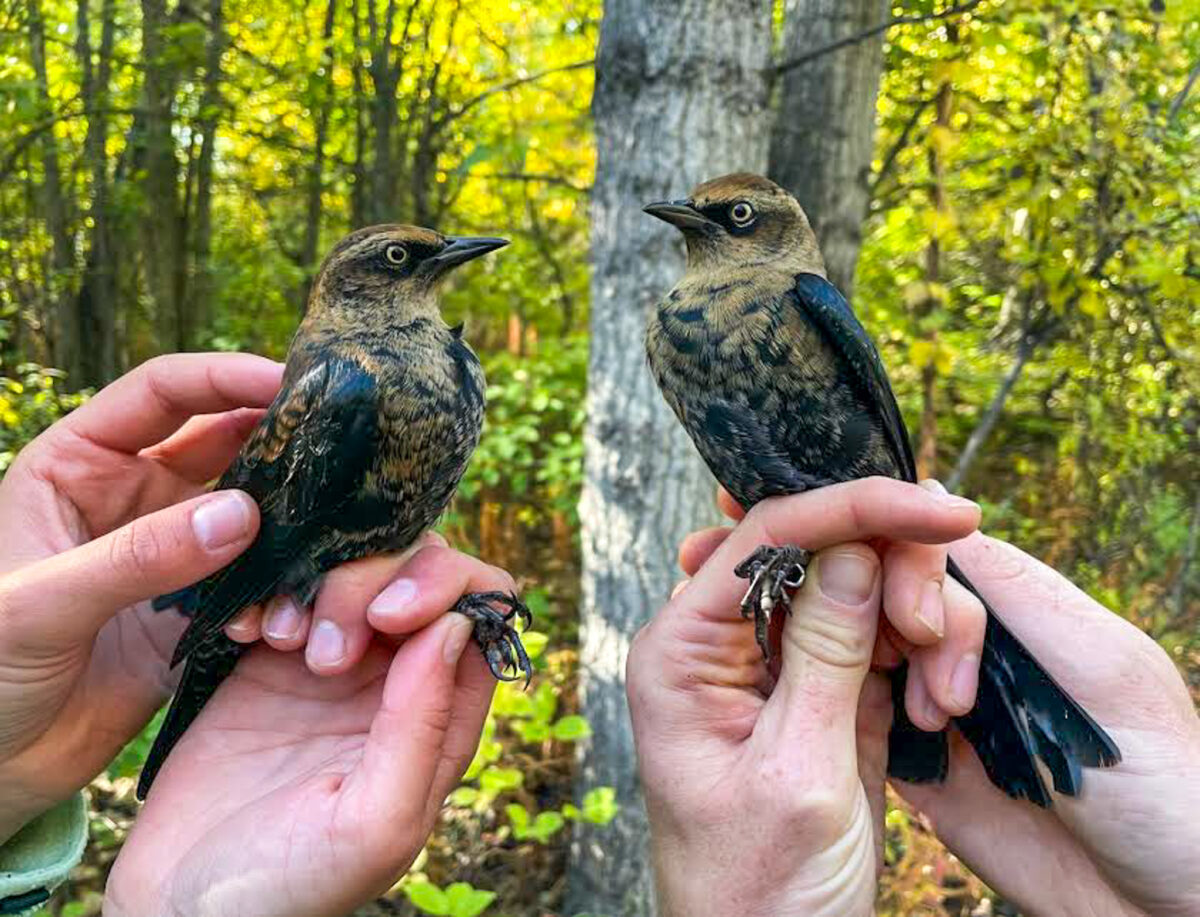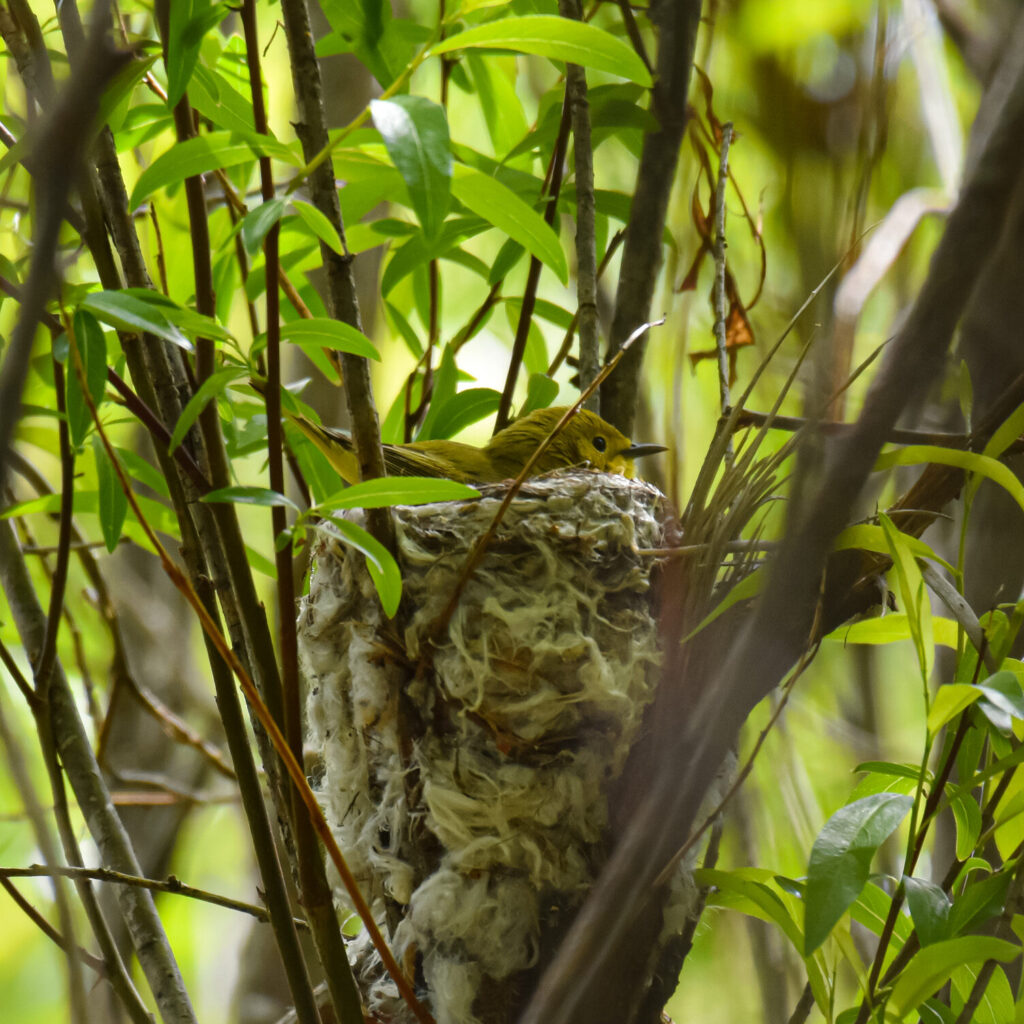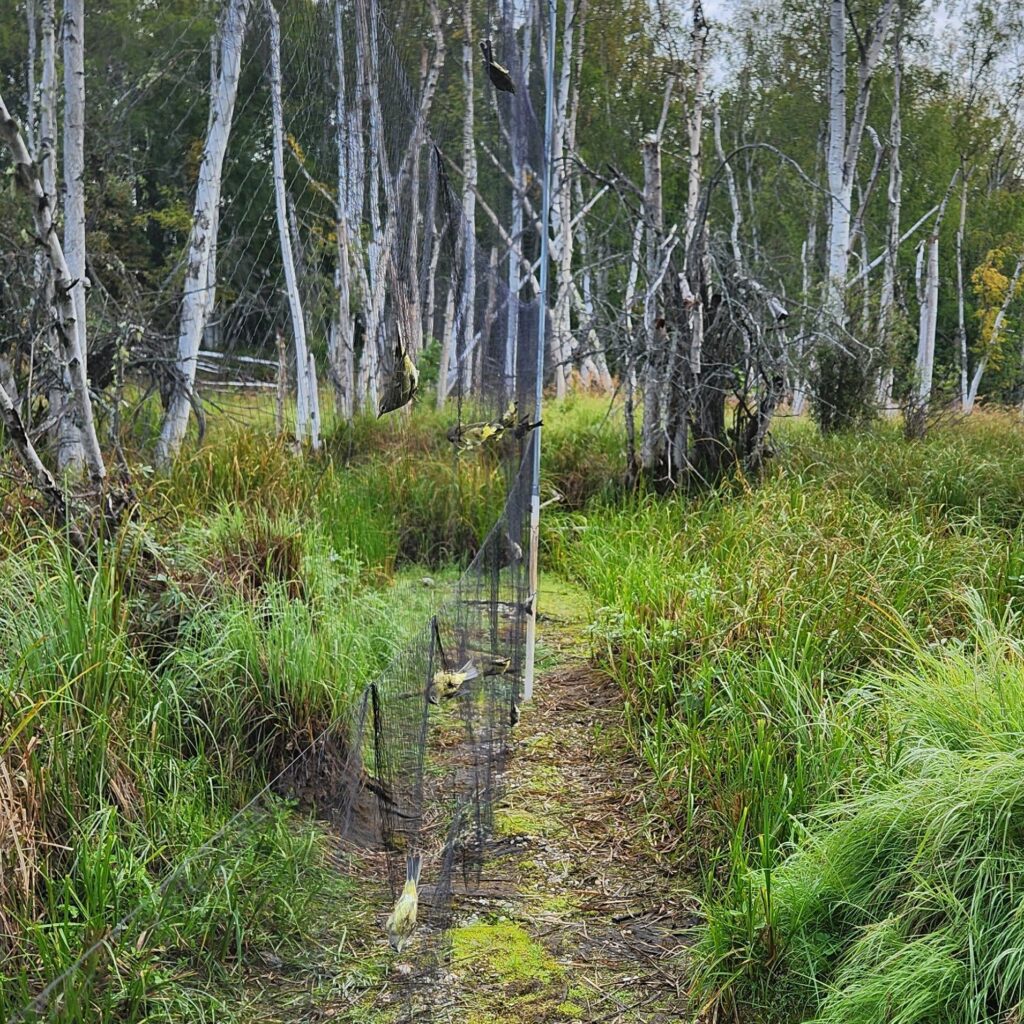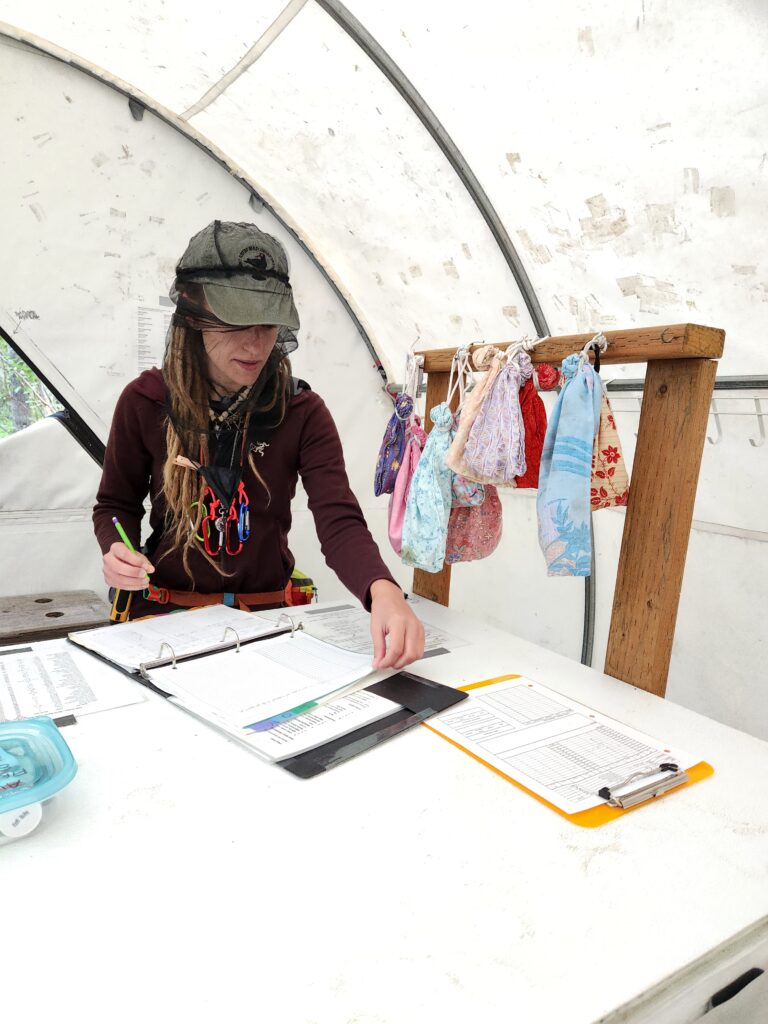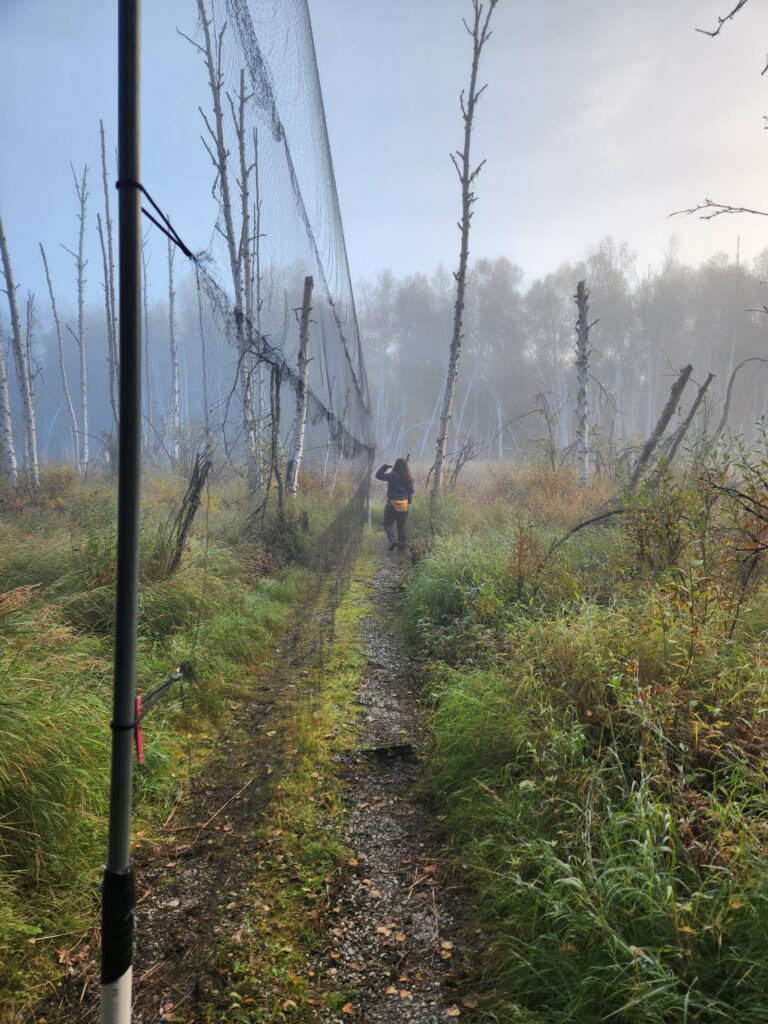The rapidly shifting seasons continually brings many changes to Creamer’s Field Migratory Waterfowl Refuge. As the springtime floodwaters receded, the warmer days awakened hibernating life, and the sunlight from the longer days brought forth lush green leaves and grass seemingly overnight!

In the spring, sojourning songbirds arrived after their long migratory journeys to raise the next generation during the warmer months. The birds embark on various nest establishing and construction in preparation for breeding. The abundance of berries, fruit, seeds, insects, and other invertebrates during the warmer months grant adult birds the ability to feed themselves, their young, and eventually the young birds learn to forage and feed themselves throughout the season.
Bird Population Data
The Alaska Songbird Institute (ASI) completed their banding efforts for 2023 at the Creamer’s Field Migration Station (CFMS) for the fall season. As discussed, in a previous blog post about springtime bird banding: researchers catch, record, and keep track of individual birds by placing an aluminum band with a unique numerical combination on the bird’s legs. If a bird is recaptured later in its lifetime, researchers can learn about that species’ migration patterns, longevity, and ecology. The station was seeking to capture resident birds and migratory songbirds as they began their migration journey back south. It is imperative that migrants leave in a timely manner as the seasonality changes occur quickly to colder and darker conditions in Alaska.
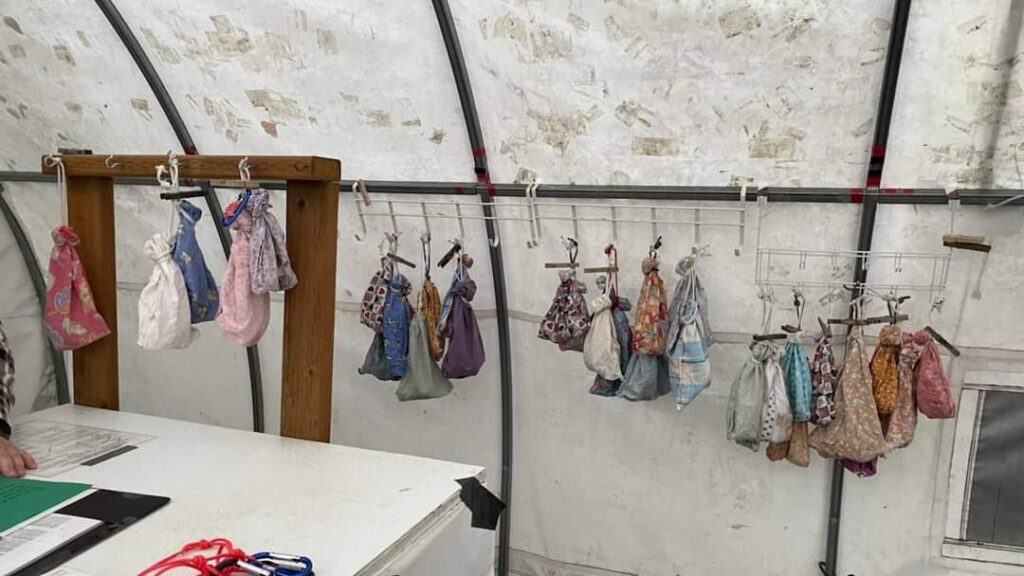
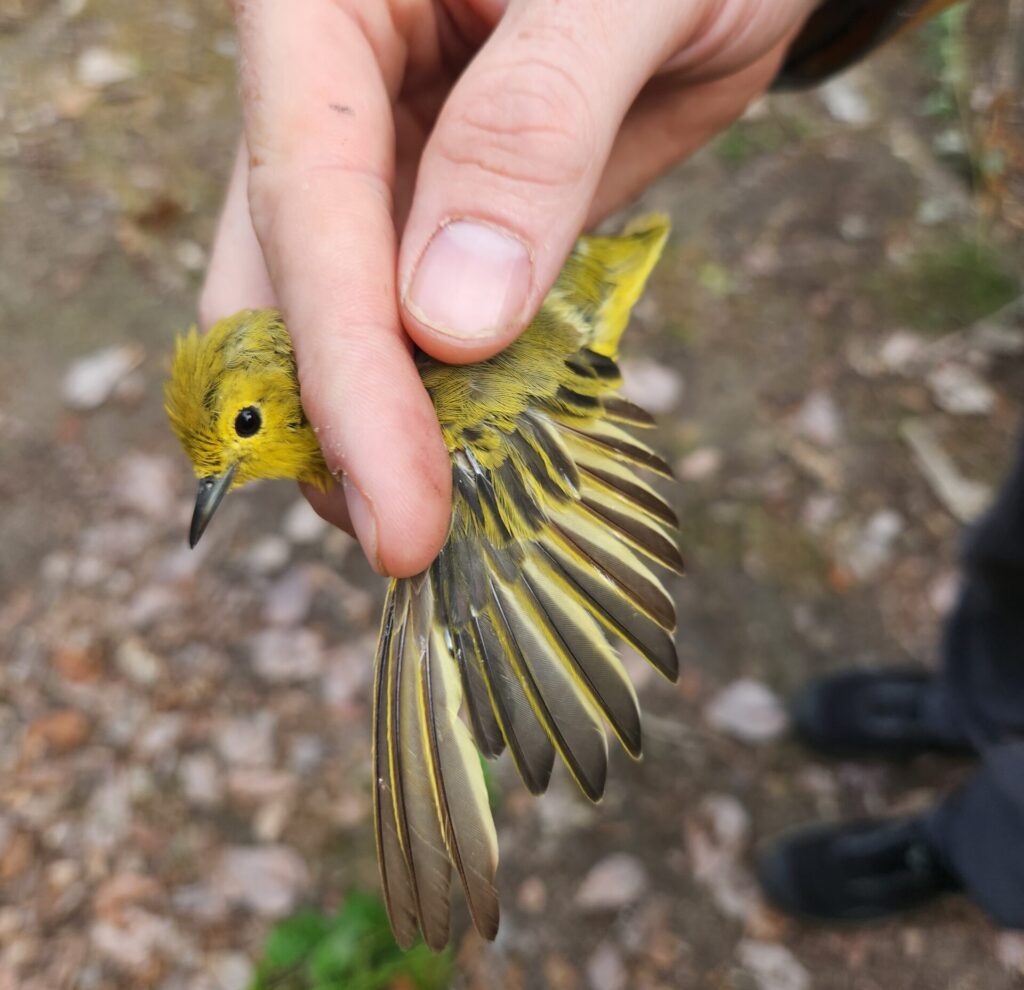
The fall banding season has a significantly higher number of bird captures compared to the spring banding season. This can be due to the large number of juvenile birds that were hatched in the summer by the adult migrants that arrived in the springtime and adult residents already occupying the area. The fall banding data provides insight into how bird population trends are currently faring. We can learn about population trends not just by how many birds we catch, but by age ratios. A high number of young birds/juveniles relative to adults for a species could indicate that that species had a good breeding season. Over the course of a few years, a high ratio of young birds can suggest that the population may be increasing. Age data can also help scientists figure out the points in a bird’s life cycle where it is most threatened. For example, scientists can see if a population is losing birds on the wintering grounds or if poor conditions at the breeding grounds could lead to low nesting success.
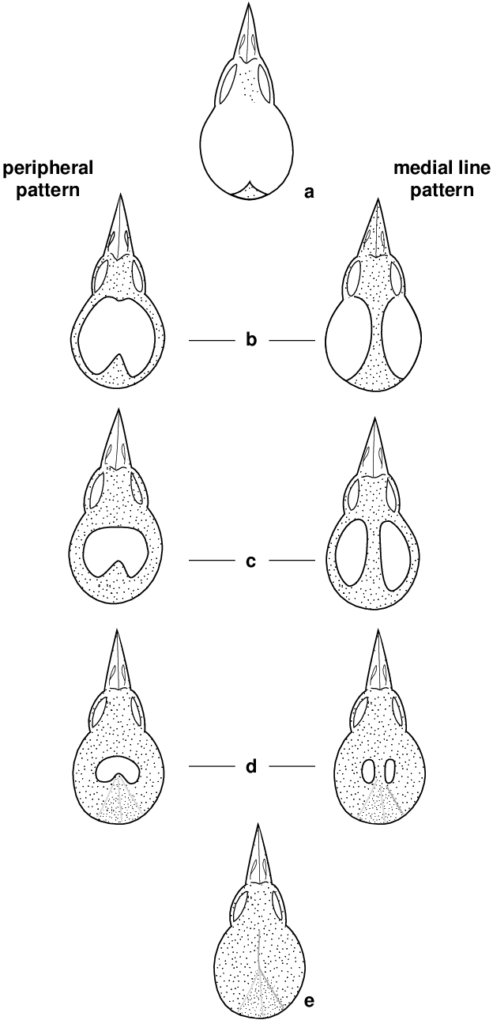
At CFMS, bird banders use different means for determining age and sex of the birds caught in the research area. Birds can look different at various times of the year and some adults and juveniles can look indistinguishable from each other. Bird researchers look for differences in a bird’s molt to help determine age. Feather molting in birds serves two purposes: to replace worn or damaged feathers and to provide different plumage that helps indicate a bird’s age, sex, and season of the year. The molting process is a complicated process that can vary between individuals, species, and years. Most birds will molt once or twice a year, and each molt is classified as a partial molt or complete molt. Partial molt means that only some of the feathers are replaced in that cycle, and the others will be replaced in the next cycle that year or the following year. Hatch-year songbirds undergo a partial molt in the fall. Adult songbirds will undergo a complete molt during this time. This means that every feather is replaced at some point during one cycle. Molting songbirds with a limited flight ability, will stay in dense shrubs and woods to hide from potential predators.
Viewing the bird’s skull can also be a useful tool to only determine a bird’s age. Birds’ skulls consist of a single layer of bone when they are young, and since their skin is also very thin and translucent, you can see a bird’s skull simply by parting the feathers on its head. Examining the skull to see if, and to what extent, the second layer of bone has grown in can help banders identify hatch-year birds in the fall, before the second layer has fully grown in. As shown in the left diagram, a newly hatched bird skull is Figure e. The subsequent diagrams show how the second layer of skull grows in as the bird matures.
Fall Banding at Creamer’s Field
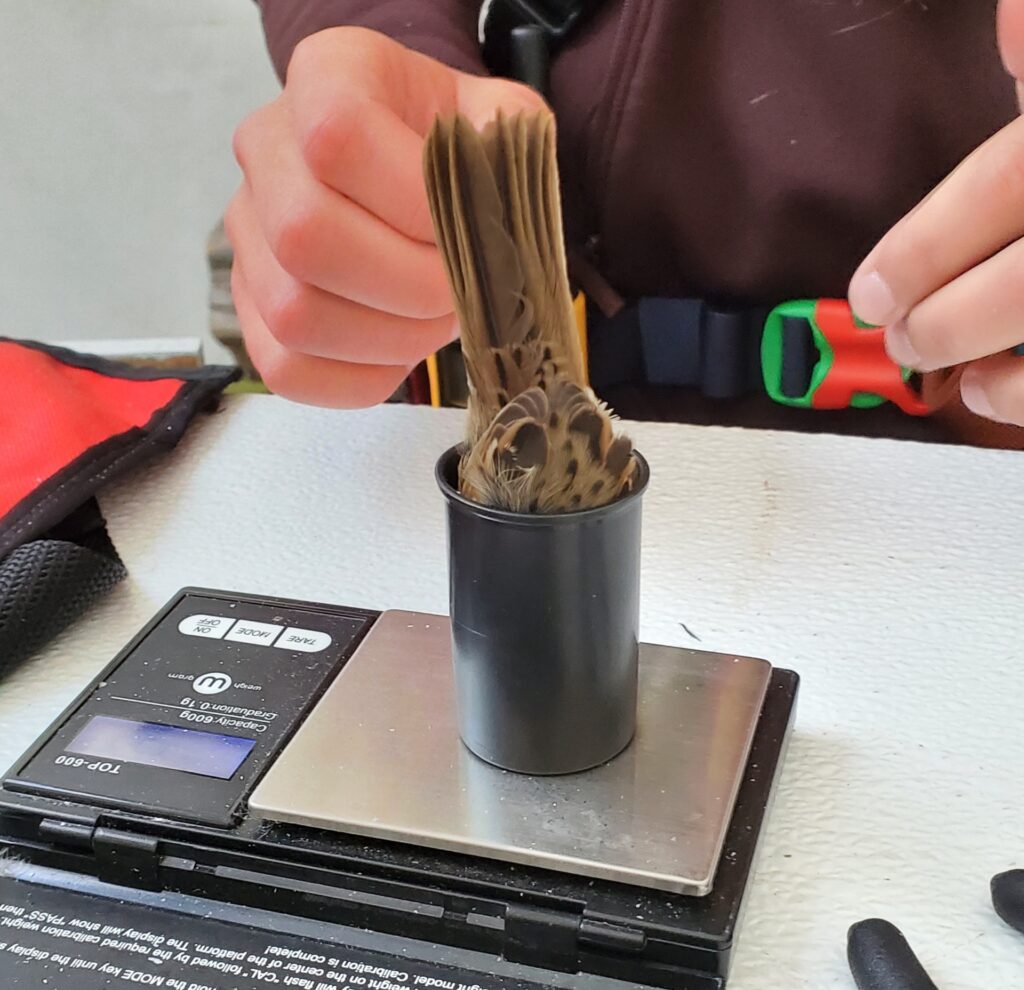
For the fall banding season, CFMS operated 26 nets up to 6 hours per day for 46 days from late July to late September. In contrast to the spring season, the arid summer resulted in dry conditions during the fall banding months in the seasonal wetland. With the lack of rainfall, the seasonal pond area, also known as the “gully”, never filled up with water. There was no need for banders and staff to wear waders or wading boots unlike in previous years to check the gulley nets. The irritations that the banding team dealt with were abundant mosquitoes, poor air quality from wildfire smoke, and falling leaves tangling in the mist nets.
This fall season had a very high capture rate! The only year that had a higher capture rate in the last decade was 2018. By the end of the 2023 fall season, the station captured 2,099 birds in total (1,815 newly banded birds, 247 recaptures) of 32 different species!
The top bird species that were captured during this fall season were Lincoln’s Sparrows (376 captures), Yellow-rumped Warblers (297), Orange-crowned Warblers (293), Dark-eyed Juncos (216), and American Tree Sparrows (170). It was a good season for sparrows overall, with every one of each sparrow species having their highest capture rates over the past five years. Lincoln’s Sparrows have never been the top capture in a season, and it was also the first time since 2012 that the station caught over 100+ American Tree Sparrows. Of the birds that were already banded and caught again, nearly half of the recaptured birds were residential Black-capped Chickadees.
Read more about some unique captures from this season:
- The station caught two species that are considered to be more “southerly” birds that occur rarely in Interior Alaska during breeding season:
- The rarest bird caught this season was the Tennessee Warbler (top left photo), which had been caught only 7 times prior to 2023! In the research area, 2 hatch-year Tennessee Warblers were caught on August 24 and September 3!
- The station also recorded the 12th capture of a Yellow-bellied Flycatcher (top center photo) on August 17. This bird was also aged as a hatch-year.

Photo by ASI, Tennessee Warbler. 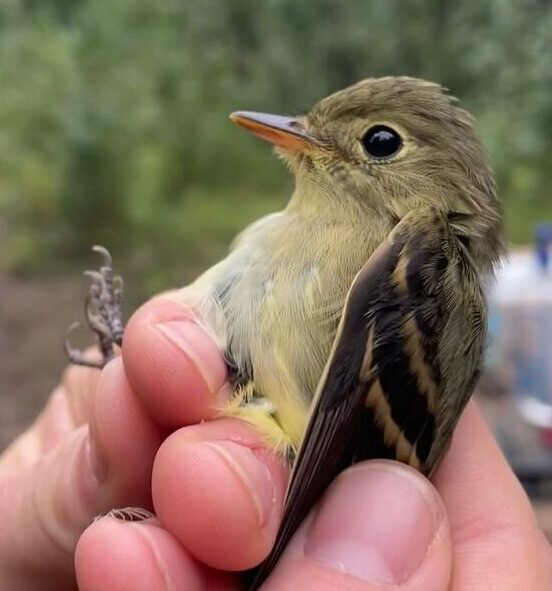
Photo by ASI, Yellow-bellied Flycatcher. 
Photo by Melanie Graeff, Common Redpoll. 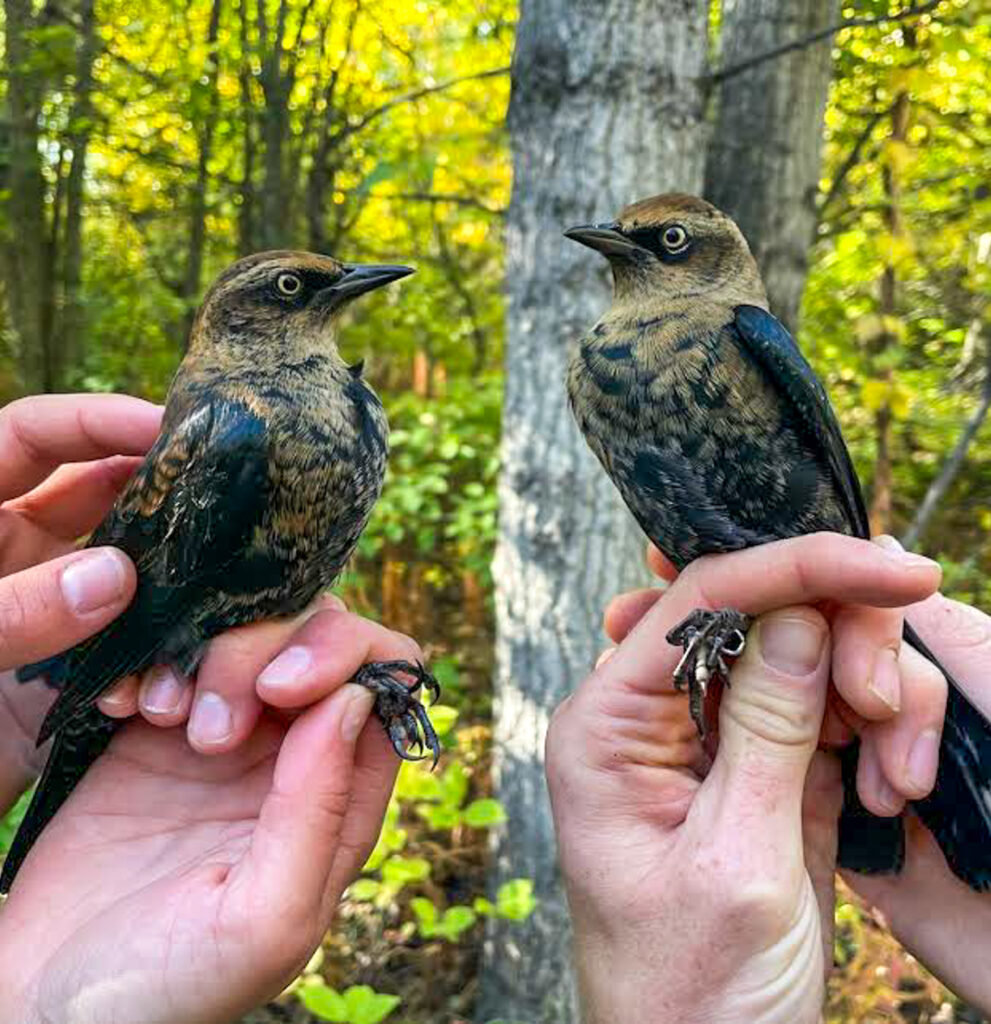
Photo by ASI, Rusty Blackbird pair. 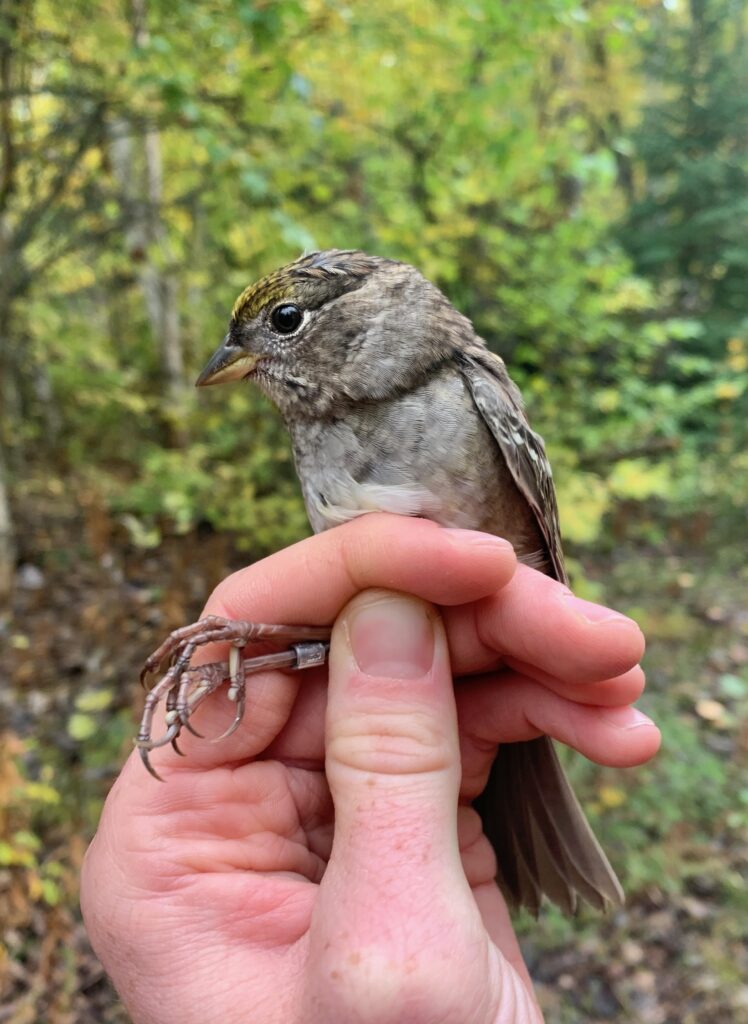
Photo by ASI, Golden-crowned Sparrow. 
Photo by ASI, Black-capped Chickadee.
- On August 22, the station had their first fall season Common Redpoll (top right photo) capture since 2020! This was a pretty young bird, one that likely fledged towards the end of the summer and was recaptured several more times around the station over the following days.
- On September 13, the only Rusty Blackbirds caught were a pair (bottom left photo). No blackbirds were caught last year, and their flocks seemed to be keeping their distance from the gulley nets due to the drier conditions.
- On September 14, a single Golden-crowned Sparrow (bottom center photo) was caught and only 30 have been banded in the station’s 32-year history.
- The standouts were two Black-capped Chickadees (bottom right photo) that had been tagged with color bands for observational studies several years ago and have been caught dozens of times since!
- The most “trap-happy” of the pair, band #249063623, was first banded as a hatch-year on July 31, 2019. After ending up in our nets 6 times this year, has been caught a grand total of 38 times over its life!
- The other bird, band #249063440, has been captured 35 times now. It was first banded on August 1, 2018, as a hatch-year, making it over 5 years old currently!
Banding Staff
Along with the number of captures, CFMS had a number of new staff members join in the banding effort this season. In joining Program Director and lead bander Robert Snowden, along with Science Educator/Communication Specialist Georgia Houde, came two seasonal Songbird Banding & Education Interns: Sarah Kennedy and Alexandra Pearcy!
Sarah grew up in Clinton, New Jersey and she began her bird banding career at Powdermill Avian Research Center with Carnegie Museum of Natural History in Rector, PA as their avian outreach technician in Spring 2023. She hopes to continue in the field of avian outreach and bird banding, as well as going to graduate school and working in ornithology.
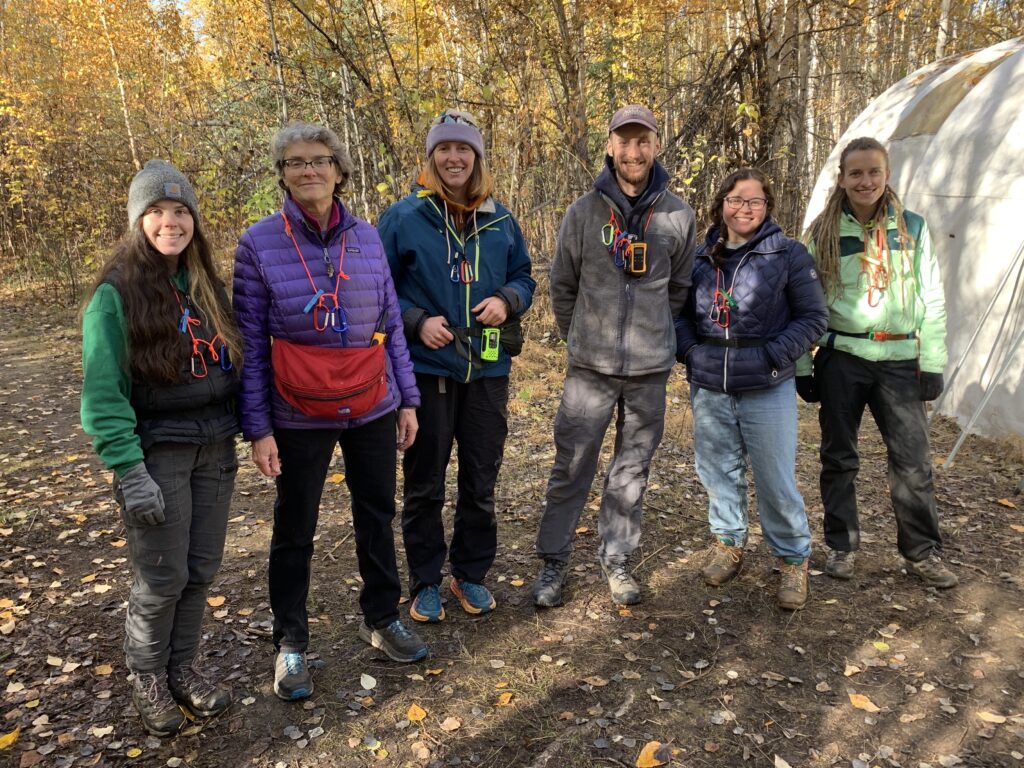
Alex is from Michigan and she has held many seasonal positions around the US including working in Denali National Park as a Science Educator! She considers Belted Kingfishers as her favorite bird species as she has many fond memories of hammocking beside the Kalamazoo River observing them fly around to hunt for fish.
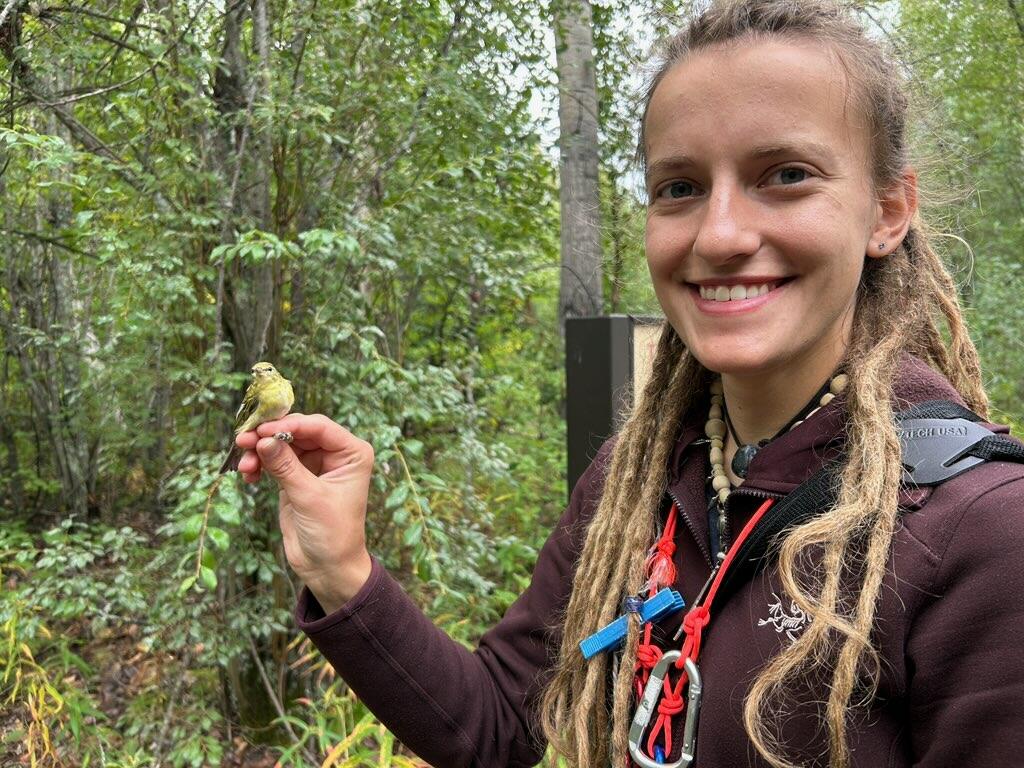
The station also welcomed seasonal bander Larissa Babicz! Larissa grew up in eastern Pennsylvania and shortly after graduating, started doing avian field work. She learned about bird banding during a conservation science apprenticeship in California and was hooked! She completed another banding season in North Carolina and is excited to now be working in Alaska! She loves sharing her passion for birds with others.
CFMS also enjoyed the support of longtime volunteer bander Laurel Devaney along with 26 other dedicated volunteers this season, including 11 new volunteers! The station was very fortunate to have a large and supportive team conducting research and leading field trips this season!
Ways to Help
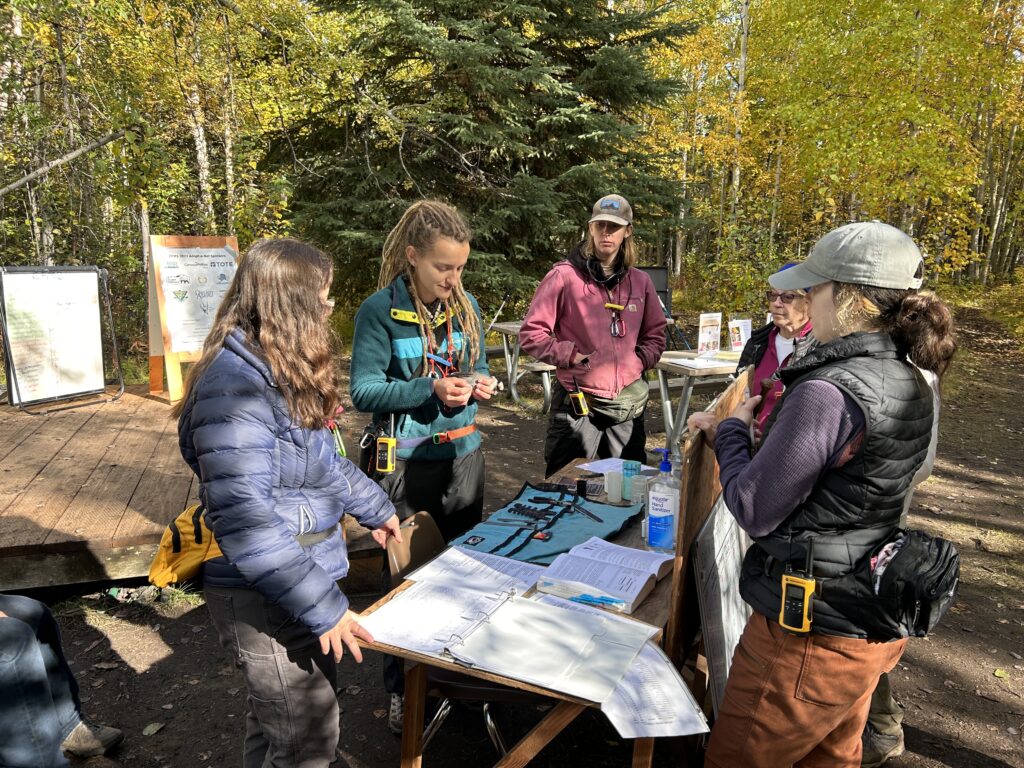
Want to contribute to bird research with the Alaska Songbird Institute? Volunteers are invaluable in making the field work at the Creamer’s Field Migration Station happen! There are many opportunities to help, from “picking” birds from mist nets to data entry, event planning, serving on an advisory committee, and more. There are opportunities for people of all ages, and with a diversity of skill sets. Visit the Alaska Songbird Institute’s website for more information on how you can help at www.aksongbird.org.
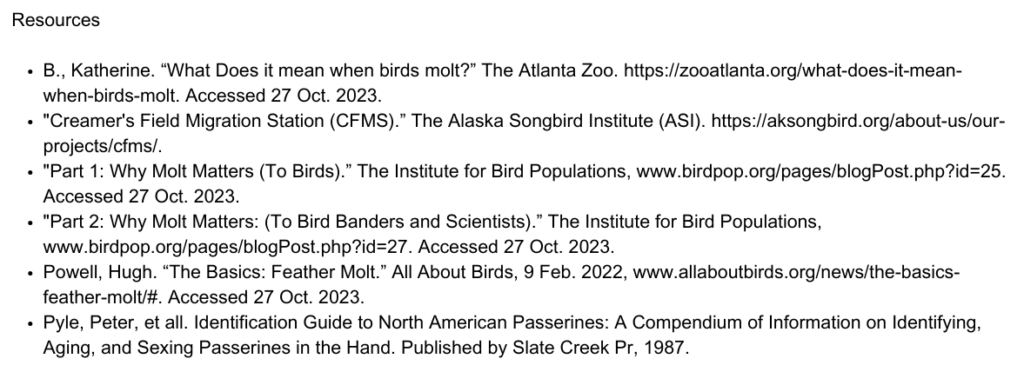
Information and photos compiled by Melanie Graeff, the Programs & Events Coordinator with the Friends of Creamer’s Field.

